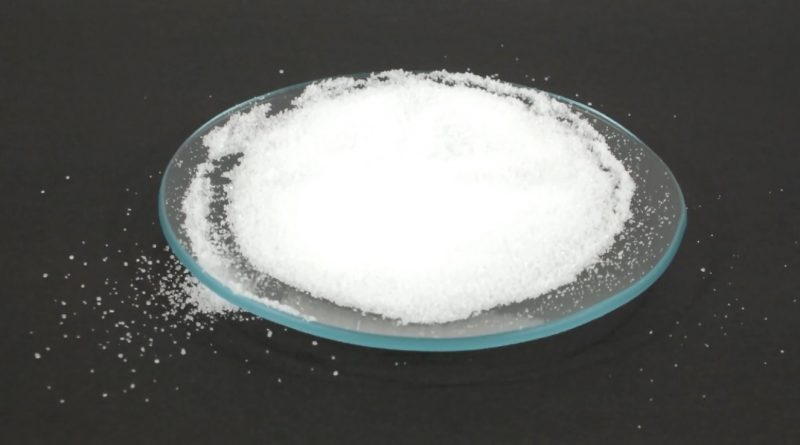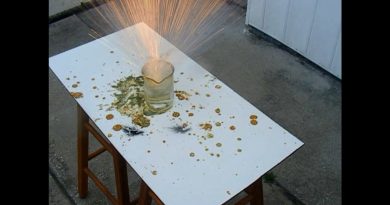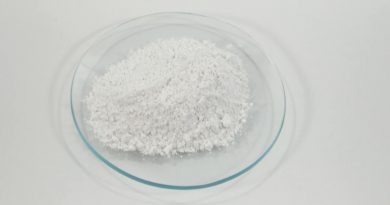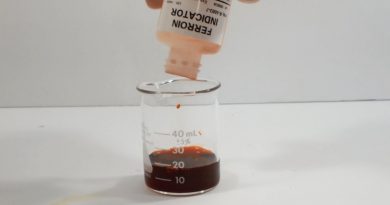02.06- Fructose
Well, I started out the year saying “one video per week” and now it seems I’m getting out one per month! I’m working on a bunch of different projects at the same time, all of essentially equal importance, and the result is that I’m making progress, but it’s SLOW. I’ve been experimenting with different time management strategies with limited success. But this new one I recently started is the best one yet. So… fingers crossed! In the meantime, here’s a little something sweet to tide you over:
I thought I’d start the video with a flashback to my university days and an experiment I conducted for a presentation. A friend and I set up the six “enhanced” sugar piles and then used concentrated sulfuric acid to get them going. If memory serves, I think we had 1 gram of sugar and 1 gram of potassium chlorate, but I couldn’t find any notes easily enough. My goal was to visually say sugar A reacted more vigorously than sugar B, but that wasn’t the case at all. In fact, other than the starch and xylitol, there was no obvious difference between any of the reactions.
The reactions produced a considerable amount of smoke, so we had to set up a fan and leave the room for a while. In the meantime, I wondered if I should bother showing the experiment at all. When we went back in and started cleaning up, I noticed the char marks under the little tiles. There’s a quantitative result! The size of the char marks are proportional to the amount of heat given off in the reaction!
The obvious winner for “most vigorous reaction” was the xylitol, but the fructose came in a close second. Sucrose was probably runner up. I thought about the possibility that the fructose and sucrose going at the same time might have biased the result. And that’s still possible, but they were pretty far apart.
In any case, fructose is an outstanding reducer. The first new experiment I did proved that for sure. The “blue bottle” reaction is famous as a chemistry demonstration, and it uses a solution of dextrose in sodium hydroxide. Through my own experimentation, I found that a 0.25 M solution of dextrose and 1 M solution of sodium hydroxide, mixed 1:1, is a suitable solution. I store them separately, but you could store them for a little while together with a reduction (no pun intended) in shelf life.
I used the same proportions for this experiment with fructose, and was amazed at how quickly the dyes lost their color. I didn’t do a side-by-side comparison because my dextrose solution had gone bad and I didn’t want to mix a new one. Based solely on memory, I’d say that the fructose reduced the dyes 4-5 times faster than dextrose does. Which is just shocking to me.
I’ve always wondered what would happen if these two dyes were mixed, but I’d never taken the time to find out. Mostly because I never had them both going at once. Usually, I just do the resazurin demo and leave the methylene blue for the classic books! This time, however, I mixed a little of each solution together, and found that the resazurin oxidizes much easier than the methylene blue, and as expected, when both of them are oxidized, a lovely lavender color appears.
That was an interesting experiment, but the next one was actually a bit disappointing for me. I was hoping for a super-snake with fructose, and perhaps I’d get one if it was finer. It also would have helped if I had looked up a functional procedure before I started, but flying blind is what makes chemistry fun! Someone with a lot more patience than me figured out 1:4 baking soda to sugar was the best ratio, but they followed the same procedure I did by mixing different proportions of each and seeing what gave the best result. (They probably measured a bit more precisely than I did, too!)
The conclusion on that one is simple: use powdered sugar! I would also suggest anhydrous (denatured) alcohol. The lighter fluid did alright, but it was a lot smokier and stunk the place up more. Whenever powdered sugar gets drawn from the hat, I’ll probably try different flammable solvents and maybe revisit the fructose if I’m able to reduce the particle size enough.




